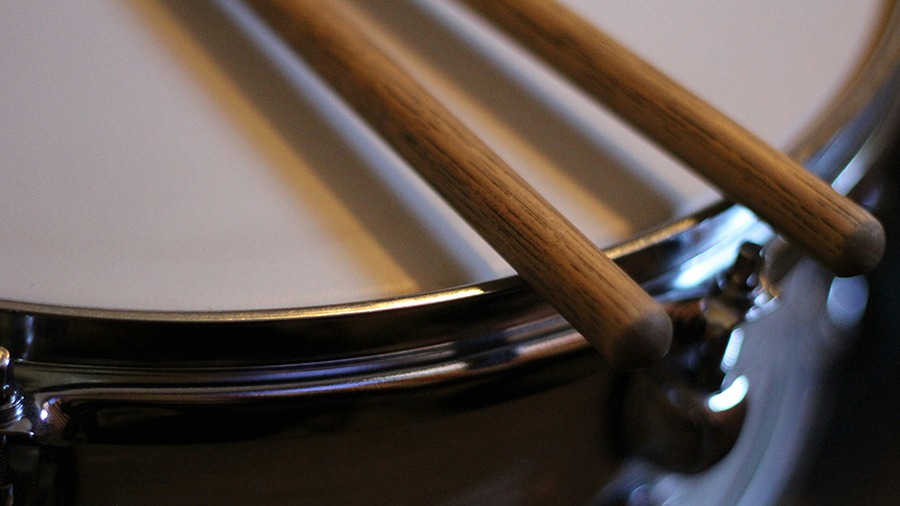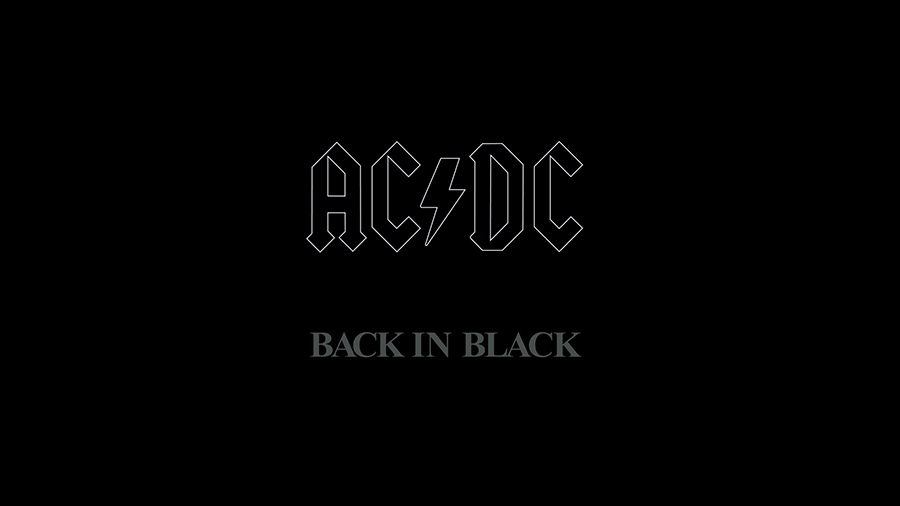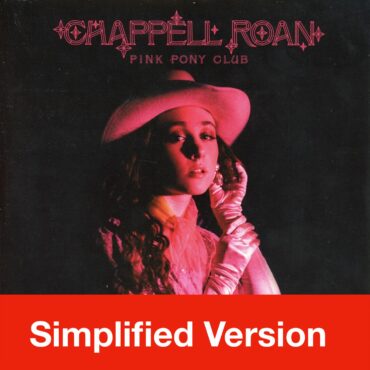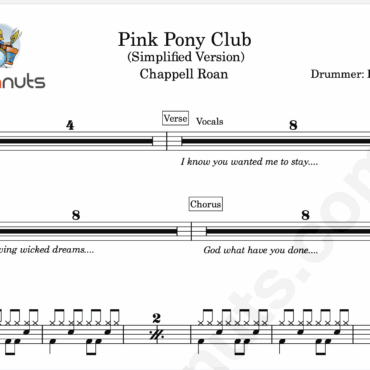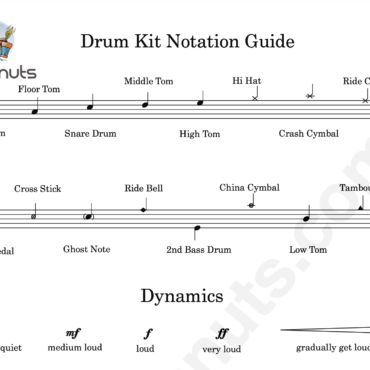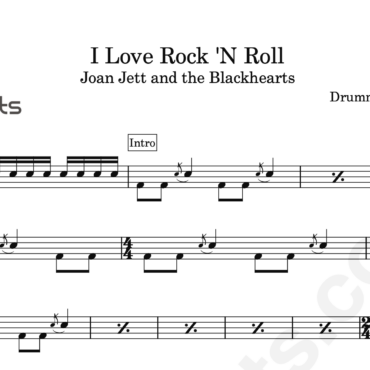Drumstick Guide
Drumstick Guide: Without drumsticks drums just aren’t as much fun! What you choose to hit the drums with can also have a big influence on how you play the drums and the sounds that you produce. Drumsticks come in a wide range of weights, lengths and styles. In this guide we will look at the different choices you have and give you some advice on things to remember when choosing your sticks.
Choosing The Right Drumstick
Choosing the right drumstick is an important decision. Your drumstick is the connection between you and your instrument. Getting the right weight, length or style of stick will greatly influence your ability to express yourself on the drums. Just try playing Back in Black by ACDC with a pair of knitting needles and you’ll see what we mean! Here’s a few tips to help you choose the right drumstick.
- If you can, always try out drumsticks before you buy them. Even drumsticks of the same brand and weight can be slightly different in shape and weight. Sometimes you’ll need to try a bunch of sticks to find two that ‘feel’ right together. Most shops will let you hold the sticks and try them on a practice pad.
- Choose drumsticks that fit and feel right in your hands- not too heavy, not too light. Again, try different weights to find the ones that feel right for you. 5A drumsticks are a good starting point for student drummers. This weight is considered an average stick. If your hands are smaller then you may want to try a lighter stick.
- Roll the drumsticks on a flat surface like a table or glass counter. This will show very clearly if the sticks are perfectly straight. Drumsticks are made of wood so sometimes they can be slightly warped, again this can affect your playing.
- Don’t choose drumsticks because they’ve got your favourite drummers name on them. These are called signature sticks and are replicas of a particular drummer’s stick. This is the stick that suits his or her hands and style of music- not yours.
Drumstick Weights
Drumsticks come in a variety of weights and lengths. There are 4 industry standard weights to choose from; 7A, 5A, 5B, 2B. Basically the higher the number, in the title of a stick, the lighter weight it is. eg. a 7A stick is lighter than a 5A stick. The 5A drumstick is considered an average weight drum stick suitable for beginner drummers. Some brands also make Signature sticks. These are drumsticks designed by a famous drummer for their preference in shape, weight and length. Remember try a stick before you buy it – just ’cause you like Tre Cool’s drumming doesn’t mean his signature drumstick will suit you.
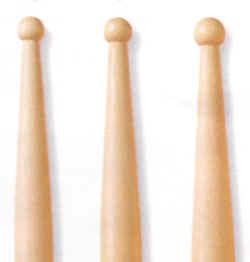
Parts of the Drumstick
The tip (or bead) of the stick is the primary point for hitting the drum or cymbal. The Shoulder of the stick is often used for hitting the crash cymbal or for sounding rim shots on the drums. The Shaft of the stick is where we hold the stick. The Butt of the drum stick is sometimes used for ‘clicking’ on the rim of the snare drum.

Wooden Tip Drumsticks
The wooden tip drumstick is regarded as the ‘standard’ drumstick. The entire stick is made from wood. Wooden tip drum sticks can come in different weights, lengths and can be made from different types of wood. All these factors can influence the sound and feel for the drummer who is using them.
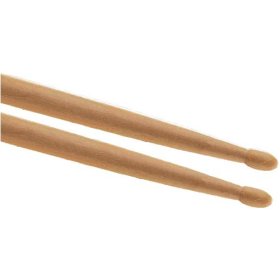
Nylon Tip Drumsticks
Nylon tip drumsticks refer to the tip or bead of the stick being made of a separate piece of nylon (plastic). This nylon produces a sharper sound on the cymbals and can also prolong the life of the the stick as the tips wont chip- they can however occasionally fall off!
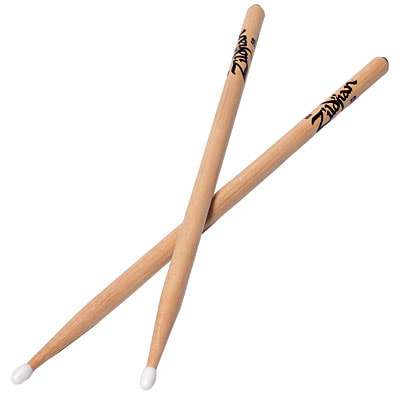
Brushes
Brushes are primarily associated with Jazz drumming as they were popular in the Jazz era. They are made of a series of wires (sometimes plastic) joined to a solid handle. By dragging, tapping and flicking the skins and cymbals they produce a truely unique sound.
For an example of Brushes in action check out the master Buddy Rich performing “Brush Strokes”
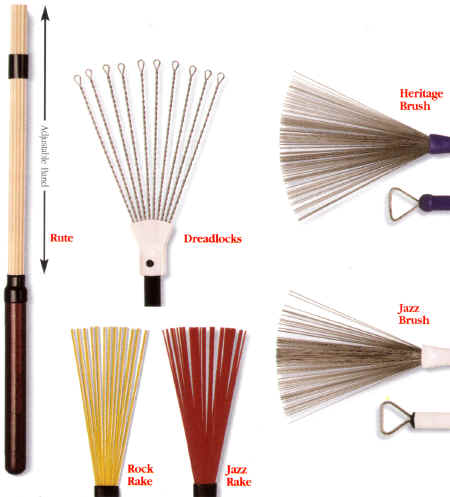
Synthetic Sticks
Drumsticks are produced in other materials apart from wood, including plastics, carbon fibre and even metal. The varying materials will effect the sound, weight and durability of the stick. The best idea when chosing a stick is to try it out. If it doesn’t feel good it doesn’t matter how durable it is.
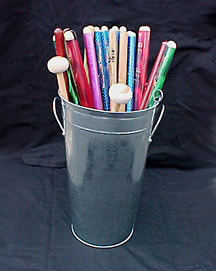
Blastix and Multi Rods
These are also known as Hot Rods and other various names but usually refer to a series of small wooden or plastic rods bound into one larger stick. These are great for practice- as they are quieter. But also they produce a unique sound on the drums. A cross between a Stick and a Brush.
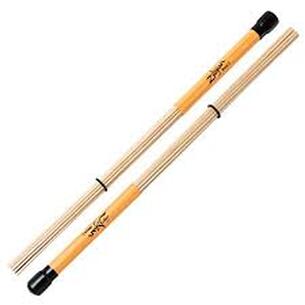
Drumstick Brands
There are probably as many brands of sticks as there are drums- loads! Here are some of the more popular ones that offer a high quality stick.
Check out the web sites of these brands for more information on the drum sticks they produce.
Promark | Vic Firth | Vater | Zildjian | Regal Tip | Tama | Premier

